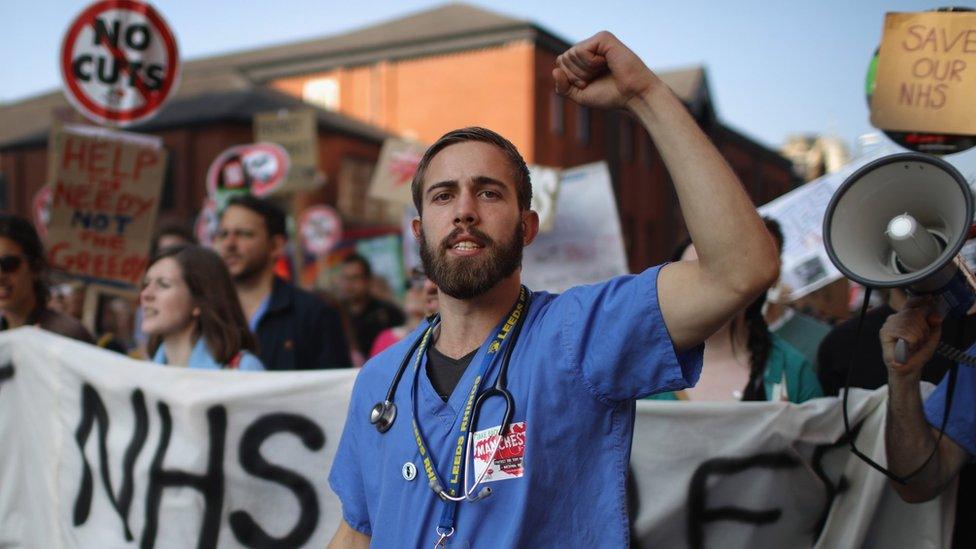Junior doctors row: A nightmare for the NHS and patients?
- Published
- comments

The result of the junior doctors ballot comes as no surprise: the vote in favour of strikes was a near-certainty as soon as the ballot papers were sent out. What is uncertain is what happens next.
Three strike dates have been earmarked - all in the first half of December. That is a time when hospitals traditionally start struggling, as winter bites.
If the strikes go ahead, services will be disrupted. Make no mistake about that. But the British Medical Association says the aim of doctors taking part will not be to maximise that - as is the goal in many other industrial disputes.
On the first day of action that has been earmarked, junior doctors will still staff emergency care. On the other two dates, they will walk out in the knowledge there will be other medics - consultants, staff doctors and locums - that can plug the gaps.
Whether that will be enough for hard-pressed emergency services will be argued over ahead, during and after any walkout.
What is certain, though, is non-emergency services will suffer. Hip operations, knee replacement and routine clinics will have to be cancelled.
In fact, as happened the last time doctors took action in 2012, over pensions, expect hospitals to start rearranging services in advance.

Have doctors gone on strike before?
Yes. The last time there was industrial action was in the summer of 2012. That involved all doctors and was over pensions. But during that dispute, urgent and emergency care was staffed and disruption was largely kept to a minimum.
You then have to go back nearly 40 years before that for the last time junior doctors took action. That was in 1975, over pay and conditions, but again emergency care was provided. The dispute was resolved within a month of action starting.
Want to know more about the dispute?

It meant on-the-day disruption was minimised - despite all grades of doctors being involved. Figures from the NHS at the time showed only one in 10 planned operations had to be cancelled and a similar proportion of outpatient appointments.
But during that walkout, all urgent and emergency services were staffed. For hospitals to cope this time, they will have to redeploy other doctors. There are more than 40,000 consultants and 10,000 staff doctors, not to mention locums, that could be brought in. There are also 17,000 junior doctors who are not BMA members.
'Perfect storm'
However, even with these numbers, it will be a logistical nightmare for hospital bosses. And with the system under severe strain, three days of action has the potential to cause havoc. Cancer targets are being missed, and the 18-week deadline for routine treatments is close to being breached.
There just isn't the capacity to rearrange large volumes of appointments, tests and operations smoothly. It is why the Society of Acute Medicine has called it the "perfect storm".
Junior doctors row
55,000
junior doctors in England
37,700
balloted over industrial action
-
£3.1bn spent on junior doctor pay currently
-
11% rise in basic pay offered
-
25% cut in weekly hours that attract a premium unsociable hours payment
Can it be avoided? In recent weeks, both sides have dug their heels in. Health Secretary Jeremy Hunt has argued he can't compromise because the reforming the contract is needed to push forward with the manifesto commitment for more seven-day services.
It is also noticeable he has started talking about the harm and inconvenience that will be caused to patients.
But the BMA is not a body to be cowed - countless health secretaries have left the job bemoaning the power and influence the union wields. And backed by such an overwhelming majority of its membership, the BMA leadership will be determined not to blink first.
The concern now is that with both sides seemingly so far away, even with the help of independent arbitration (which is now being called for), a resolution to this dispute is going to be incredibly difficult.
- Published22 October 2015
